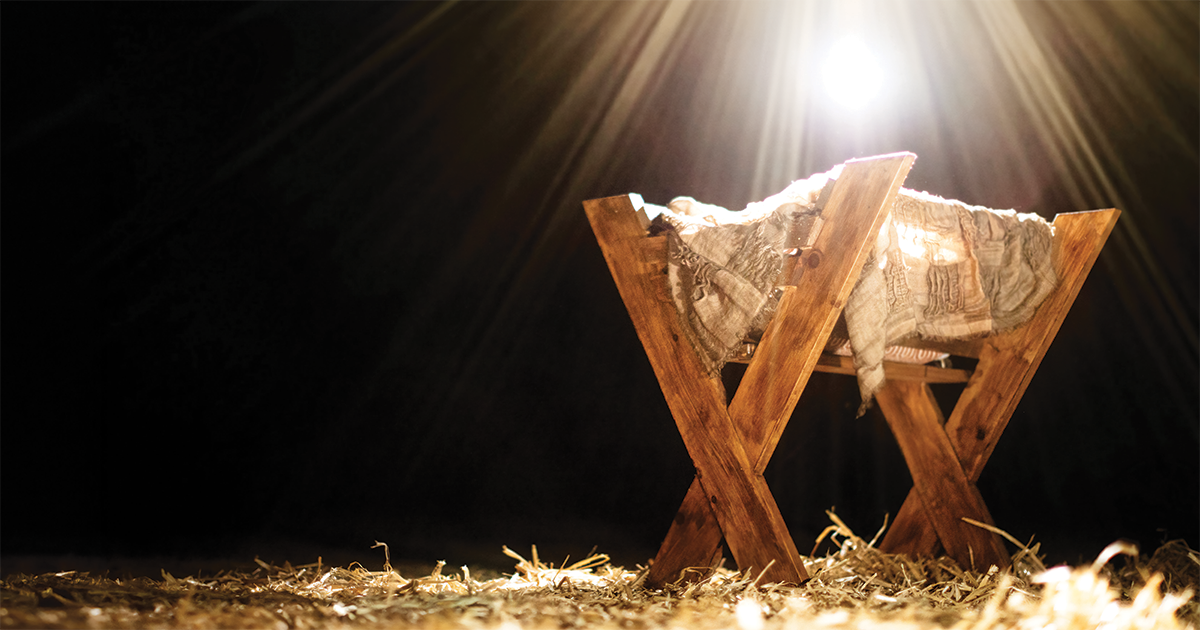“We believe … in one Lord Jesus Christ, the only begotten Son of God, begotten of his Father before all worlds, God of God, Light of Light, very God of very God, begotten, not made, being of one substance with the Father, by whom all things were made.”—Nicene Creed
“Who do you say I am?” Jesus asked his first disciples.
The Gospels show us the struggle they had with this question as they accompanied him through first-century Palestine. Often, they simply didn’t understand who Jesus was, what he was saying or what he was doing.
But after his Resurrection there was a radical change. “When they saw [Jesus], they worshipped him” (Matthew 28:17). Seeing wounds on the flesh of the resurrected Jesus, Thomas exclaimed: “My Lord and my God” (John 20:28). The Apostle Paul added that “at the name of Jesus every knee should bow, in heaven and on earth and under the earth” (Philippians 2:10). And when John sees heaven opened to him, he hears the angels saying, “Worthy is the Lamb, who was slain, to receive power and wealth and wisdom and strength and honour and glory and praise!” and sees the elders fall down and worship him (see Revelation 5:12-14).
Ever since, it has been a hallmark of Christians that we worship the Lord Jesus Christ. He is worthy of worship because he is divine. As the Nicene Creed puts it, he is “very God of very God.”
When the creed was developed 1,700 years ago, some theologians were not prepared to say this, Arius chief among them. They believed he was less than God. And so, to worship him, as Christians were doing, was blasphemy.
But if Jesus is truly divine, important truths follow.
- It means that Jesus is the way to see and experience God first-hand. As Jesus says, “Anyone who has seen me has seen the Father” (John 14:9).
- When Jesus speaks, God himself is speaking. He is not God’s spokesman.
- The ability of Jesus to forgive sins was questioned by religious authorities. “Who is this fellow who speaks blasphemy? Who can forgive sins but God alone?” the Pharisees asked (see Luke 5:20-21). Christian faith replies that Jesus speaks no blasphemy or arrogance since he is God.
- Whatever it means to say the Lord Jesus bore our sins, it does not mean that he is like a cash-rich bail-out artist who buys up the debt of someone about to go bankrupt. God is the one who has been sinned against, and in Jesus, God himself is the one who pays the price.
It can be hard to wrap our heads around this, but these are implications of saying, as The Salvation Army’s doctrines affirm, that Jesus Christ is “truly and properly God.”
Those same doctrines affirm that Jesus is also “truly and properly man [i.e., human].” Jesus of Nazareth was a particular man who lived in a particular place and culture at a particular time. He was not a generic human or a pretend human. He spoke and read languages current in Palestine 2,000 years ago. He ate food. He went to parties. He had close friends. He knew joy. He got tired and thirsty. He experienced sorrow and disappointment. He bore insults, rejection, betrayal and abandonment. The range of human experience— physical, emotional and intellectual—was his.
Because the one Lord Jesus Christ is fully divine as well as fully human, we can say that what Jesus experienced, God experienced. In Jesus, God has felt bone-tiring fatigue. God has felt parched-tongue thirst. God has experienced a loving mother’s embrace. God has experienced belly laughs. God has not only empathized from a distance; he has felt the tears of grief himself. God felt the searing pain of crucifixion. God has loved the world so much that he became flesh and dwelt among us.
He, the one Lord Jesus Christ, is, without doubt, worthy of our worship.
DR. JAMES READ was the executive director of The Salvation Army Ethics Centre for 27 years and was a member of the International Theological Council. His co-author of this series, Major Ray Harris, is a retired Salvation Army officer and author of Convictions Matter. Major Harris and Dr. Read attend Heritage Park Temple in Winnipeg.
We Believe is a six-part series on the Nicene Creed, which marks its 1,700th anniversary in 2025. This is the third article in the series. Read Part 1. Part 2.
Illustration: Prixel Creative/Lightstock.com
This story is from:










Thanks, Jim, for explaining why the Nicene Creed lays out the nature of Jesus in this way. At the time of the Council of Chalcedon, when the creed was formally approved, Pope Leo I wrote a letter to the Bishop of Constantinople clarifying Christ's two natures. I like how the English translation puts it: “The proper character of both natures was maintained and came together in a single person…complete in what is his and complete in what is ours.” It’s a letter worth reading! https://www.papalencyclicals.net/councils/ecum04.htm